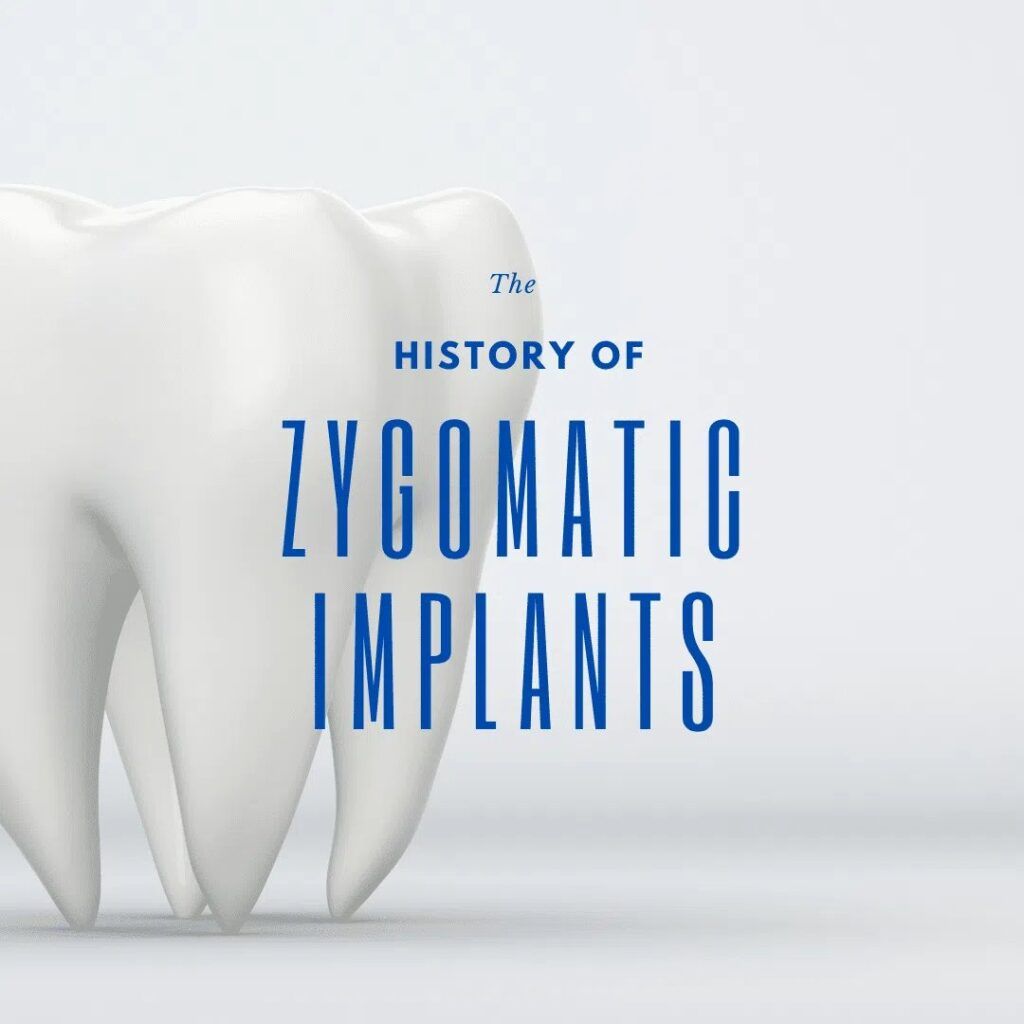Dental implant technology has quite an extensive history. While evidence of dental restorations and tooth replacement options dates as far back as 2500 BC with the Ancient Egyptians, the first evidence of dental implants as we know them today was seen in 600 AD with the Mayans. The first dental implant was made from shells and implanted into the jawbone. Radiographs taken in the 1970s then confirmed that these early dental implants actually fused with the bone. Since that time, dental implants have continued to evolve as humanity learned more about how to improve dental implant technology.
One such improvement that has revolutionized the dental implant industry was the development of zygomatic implants. Like their name suggests, zygomatic dental implants are implanted into the zygomatic (cheek) bones. Not only do the zygomatic bones provide a strong anchor point for the implants, but the zygomatic bone is also resistant to the bone loss associated with missing teeth and/or periodontitis. Still, because this type of implant is relatively new, not many people are familiar with this technology. Therefore, here is a brief history of how zygomatic dental implants were developed:
1988: Professor P.I. Branemark developed zygomatic implants for use in patients with severe bone loss in the upper jaw. He has also been credited for his osseointegration research that completely revolutionized dental implant technology.
1998: Branemark published his research on zygomatic implants. The initial technique described attaching the implants to the middle of the zygomatic bone and then taking the implant through the sinus and out through the hard palate. In order to pass through the sinus cavity, the sinus membrane was redacted to allow for the implant to pass. This technique caused problems with comfort, phonetics, and hygiene. Not to mention the fact that the sinus cavity was also directly affected.
2000: Stella and Warner made some modifications to Branemark’s original technique. Their technique was known as the sinus slot technique since they used a slot in the zygomatic buttress. This slot allowed for zygomatic implants to travel through the sinus cavity, however without interfering with the sinus membrane. Instead, the implant would travel parallel to the sinus cavity, instead of through it. This technique also allowed for a simper placement of the implants since it used more vertical angulation than the original technique.

Photo Source:
2002: Bedrossian and co-workers placed 44 zygomatic implants zygomatic implants and 80 conventional implants in 22 patients. At a 34 month follow-up, it was found that 100% of the zygomatic implants were successful as compared to only 91.25% of the conventional implants.
2005: Miglioranca et al. published an article on placing zygomatic implants with an extra-sinus technique. With this technique, the implant would be attached closer to the alveolar ridge on the external portion of the zygomatic bone. Fixing the implant to the zygomatic bone outside of the sinus cavity was suggested to result in a better position of the prosthetic, less surgical invasiveness, and better postoperative experiences.
2006: Chow et al., Bedrossian et al., and Miglioranca et al presented articles that argued immediate loading of zygomatic implants was successful.
2006-present: once the extrasinusal technique was developed, the next decade was devoted to several studies on the efficacy of this technique in relation to Branemark’s intrasinus technique and Stella and Werner’s sinus slot technique. There were also various studies that evaluated both short and long follow-up of individuals with zygomatic implants. Some of these studies also compared zygomatic implants to conventional implants. Overall, the culmination of these studies found that zygomatic implants have approximately a 95% success rate using either the intrasinusal or extrasinusal technique.

